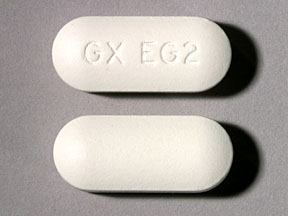Ceftin Tablets, Oral Suspension Dosage
Generic name: CEFUROXIME AXETIL 125mg in 5mL
Dosage form: tablets, powder for oral suspension
Drug class: Second generation cephalosporins
Medically reviewed by Drugs.com. Last updated on Nov 13, 2023.
Important Administration Instructions
- •
- CEFTIN tablets and CEFTIN for oral suspension are not bioequivalent and are therefore not substitutable on a milligram-per-milligram basis [see Clinical Pharmacology (12.3)].
- •
- Administer CEFTIN tablets or oral suspension as described in the appropriate dosage guidelines [see Dosage and Administration (2.2, 2.3, 2.4)].
- •
- Administer CEFTIN tablets with or without food.
- •
- Administer CEFTIN for oral suspension with food.
- •
- Pediatric patients (aged 13 years and older) who cannot swallow the CEFTIN tablets whole should receive CEFTIN for oral suspension because the tablet has a strong, persistent bitter taste when crushed [see Dosage and Administration (2.2)].
Dosage for CEFTIN Tablets
Administer CEFTIN tablets as described in the dosage guidelines table below with or without food.
|
Infection |
Dosage |
Duration (Days) |
|
Adults and Adolescents (13 years and older) |
||
|
Pharyngitis/tonsillitis (mild to moderate) |
250 mg every 12 hours |
10 |
|
Acute bacterial maxillary sinusitis (mild to moderate) |
250 mg every 12 hours |
10 |
|
Acute bacterial exacerbations of chronic bronchitis (mild to moderate) |
250 or 500 mg every 12 hours |
10a |
|
Uncomplicated skin and skin-structure infections |
250 or 500 mg every 12 hours |
10 |
|
Uncomplicated urinary tract infections |
250 mg every 12 hours |
7 to 10 |
|
Uncomplicated gonorrhea |
1,000 mg |
single dose |
|
Early Lyme disease |
500 mg every 12 hours |
20 |
|
Pediatric Patients younger than 13 years (who can swallow tablets whole)b |
||
|
Acute bacterial otitis media |
250 mg every 12 hours |
10 |
|
Acute bacterial maxillary sinusitis |
250 mg every 12 hours |
10 |
a The safety and effectiveness of CEFTIN administered for less than 10 days in patients with acute exacerbations of chronic bronchitis have not been established.
b When crushed, the tablet has a strong, persistent bitter taste. Therefore, patients who cannot swallow the tablet whole should receive the oral suspension.
Dosage for CEFTIN for Oral Suspension
Administer CEFTIN for oral suspension as described in the dosage guidelines table below with food.
|
Infection |
Recommended Daily Dosea |
Maximum Daily Dose |
Duration (Days) |
|
Pharyngitis/tonsillitis |
20 mg/kg |
500 mg |
10 |
|
Acute bacterial otitis media |
30 mg/kg |
1,000 mg |
10 |
|
Acute bacterial maxillary sinusitis |
30 mg/kg |
1,000 mg |
10 |
|
Impetigo |
30 mg/kg |
1,000 mg |
10 |
a Recommended daily dose given twice daily divided in equal doses
Preparation and Administration of CEFTIN for Oral Suspension
Prepare a suspension at the time of dispensing as follows:
- 1.
- Shake the bottle to loosen the powder.
- 2.
- Remove the cap.
- 3.
- Add the total amount of water for reconstitution (Table 3) and replace the cap.
- 4.
- Invert the bottle and vigorously rock the bottle from side to side so that water rises through the powder.
- 5.
- Once the sound of the powder against the bottle disappears, turn the bottle upright and vigorously shake it in a diagonal direction.
|
Oral Suspension |
Amount of Water Required for Reconstitution |
Labeled Volume after Reconstitution |
|
125 mg/5 mL |
37 mL |
100 mL |
|
250 mg/5 mL |
19 mL |
50 mL |
|
35 mL |
100 mL |
- •
- Shake the oral suspension well before each use.
- •
- Replace cap securely after each opening.
- •
- Store the reconstituted suspension refrigerated between 2° and 8°C (36° and 46°F).
- •
- Discard the reconstituted suspension after 10 days.
Dosage in Patients with Impaired Renal Function
A dosage interval adjustment is required for patients whose creatinine clearance is <30 mL/min, as listed in Table 4 below, because cefuroxime is eliminated primarily by the kidney [see Clinical Pharmacology (12.3)].
|
Creatinine Clearance (mL/min) |
Recommended Dosage |
|
≥30 |
No dosage adjustment |
|
10 to ˂30 |
Standard individual dose given every 24 hours |
|
˂10 (without hemodialysis) |
Standard individual dose given every 48 hours |
|
Hemodialysis |
A single additional standard dose should be given at the end of each dialysis |
More about Ceftin (cefuroxime)
- Check interactions
- Compare alternatives
- Reviews (48)
- Drug images
- Side effects
- Dosage information
- During pregnancy
- Generic availability
- Drug class: second generation cephalosporins
- Breastfeeding
Patient resources
Other brands
Professional resources
Related treatment guides
Further information
Always consult your healthcare provider to ensure the information displayed on this page applies to your personal circumstances.


